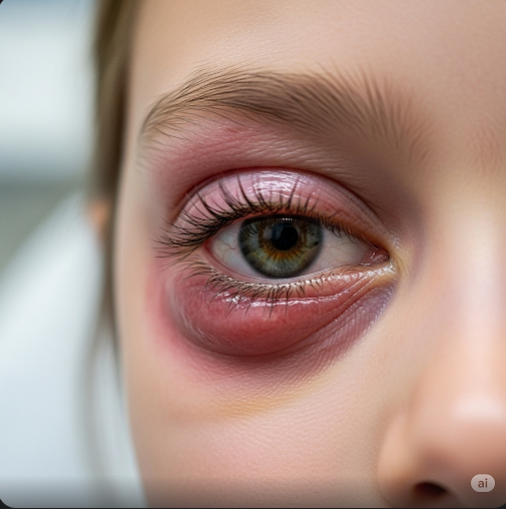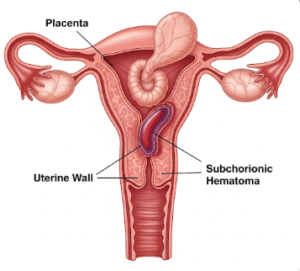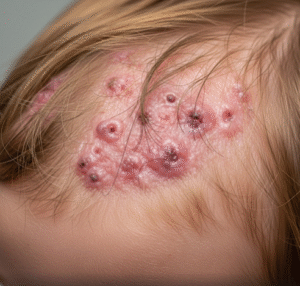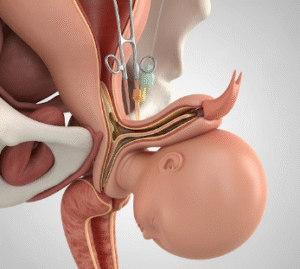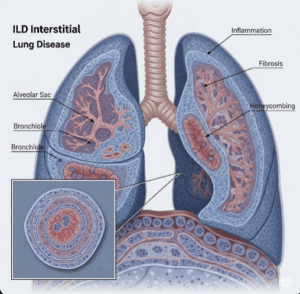Overview
Orbital cellulitis is a serious bacterial infection that affects the tissues surrounding the eye, particularly within the eye socket (orbit). It typically develops rapidly and can lead to vision loss, brain abscess, or other life-threatening complications if not treated promptly. The condition is most common in children but can occur at any age. Immediate medical attention is essential for a successful outcome.
What is Orbital Cellulitis?
Orbital cellulitis is an infection of the fat and muscles around the eye, located behind the orbital septum. Unlike preseptal cellulitis, which affects the eyelid and skin around the eye, orbital cellulitis involves deeper tissues and poses a much higher risk. The condition often arises as a complication of sinus infections, particularly in the ethmoid sinuses. It may also develop from eye trauma, surgery, or spread of infection from nearby areas.
Symptoms
- Painful, red, and swollen eyelid
- Bulging of the eye (proptosis)
- Difficulty or pain with eye movement
- Blurred or double vision
- Fever and general malaise
- Decreased vision or vision loss (in severe cases)
- Headache or facial pain
- Eye discharge or tearing
- Lethargy or irritability (especially in children)
Causes
Orbital cellulitis is typically caused by bacterial infections, often originating from the sinuses. Common causes include:
- Sinus infections, especially ethmoid sinusitis
- Trauma to the eye or surrounding areas
- Insect bites or skin wounds near the eye
- Post-surgical infection following eye or nasal procedures
- Spread from dental infections
- Bacteria involved may include Streptococcus, Staphylococcus aureus (including MRSA), and Haemophilus influenzae
Risk Factors
- Chronic or untreated sinusitis
- Weakened immune system
- Trauma or recent injury near the eye
- Recent upper respiratory or nasal infection
- History of orbital cellulitis or facial cellulitis
- Diabetes or other chronic health conditions
- Children under 10 years of age (more susceptible)
Complications
If not promptly and properly treated, orbital cellulitis can lead to serious and sometimes irreversible complications, including:
- Vision loss due to optic nerve damage
- Abscess formation within the orbit
- Meningitis or brain abscess
- Cavernous sinus thrombosis (blood clot in a major vein near the brain)
- Sepsis and systemic infection
- Permanent eye movement problems or strabismus
Prevention
- Prompt treatment of sinus, ear, and respiratory infections
- Use protective gear to avoid eye trauma during activities
- Maintain good nasal hygiene, especially during allergy or cold seasons
- Complete prescribed courses of antibiotics when treating infections
- Regular follow-up for children with chronic sinus or respiratory issues
- Strengthen immune function with a healthy lifestyle and proper medical care
Treatment Option in Korea
South Korea offers advanced and immediate care for severe infections like orbital cellulitis through its network of top-tier hospitals and specialists. Treatment is typically coordinated between ENT specialists, ophthalmologists, and infectious disease experts. Treatment options include:
- Intravenous antibiotics: The primary treatment involves broad-spectrum IV antibiotics administered in a hospital setting to target likely bacterial causes
- Imaging studies: CT or MRI scans are performed to confirm diagnosis and assess the extent of infection
- Surgical drainage: In cases where abscesses develop or there is no response to medication, surgery may be required to drain the infected area
- Vision monitoring: Ophthalmologists monitor for any changes in vision or eye pressure throughout the course of treatment
- Supportive care: Includes pain management, fever control, and close observation, especially in pediatric patients
Leading medical centers such as Severance Hospital, Samsung Medical Center, and Seoul National University Hospital provide rapid diagnostic services, cutting-edge imaging, and 24/7 emergency care. These institutions offer multilingual support, making them ideal for both local and international patients.

